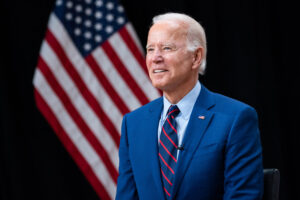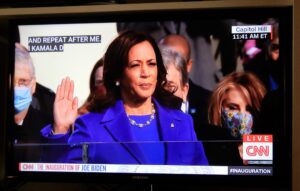‘2021’ Category
» posted on Saturday, January 23rd, 2021 by Linda Lou Burton
About Kamala Harris
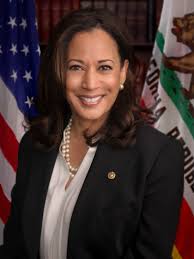 Posted from the capital city of Little Rock, Arkansas by Linda Lou Burton – Go wide and go deep are marketing buzzwords, football strategies; and just plain common sense when you go about considering things. Yesterday I talked about Joe Biden and his depth of experience. Today, let’s go wide with Kamala Harris, the 49th Vice President of the United States. Her experiences are as wide as the oceans, borderless and interracial. She is half black, she is half Asian; she is 100% American. Her father was born in Jamaica, her mother was born in India, and she was born in the United States. An interesting connection popped into my mind about these three countries: as different as they are, all were once under British colonial rule; all struggled for independence; all succeeded.
Posted from the capital city of Little Rock, Arkansas by Linda Lou Burton – Go wide and go deep are marketing buzzwords, football strategies; and just plain common sense when you go about considering things. Yesterday I talked about Joe Biden and his depth of experience. Today, let’s go wide with Kamala Harris, the 49th Vice President of the United States. Her experiences are as wide as the oceans, borderless and interracial. She is half black, she is half Asian; she is 100% American. Her father was born in Jamaica, her mother was born in India, and she was born in the United States. An interesting connection popped into my mind about these three countries: as different as they are, all were once under British colonial rule; all struggled for independence; all succeeded.
India & Jamaica & the USA
Let’s talk about the biggest country first. Located in south Asia, India takes up more than 1 million square miles on the planet; it is the world’s 2nd most populous country with over 1 billion people; it is the world’s most populous democracy. Kamala’s mother, Shyamala Gopalan, was born there in 1938, when India was still under British colonial rule. Independence was attained in 1947, when Shyamala was 9 years old, and by the time she was 28 in 1966, Indira Gandhi was Prime Minister, the first female to serve her country as such.
Jamaica is a tiny Caribbean island nation, just south of Cuba, with a land area of 4,244 square miles and a population of just under 3 million. Kamala’s father, Donald Jasper Harris, was born in Jamaica in 1938, when Jamaica was still under British colonial rule. A colonial Jamaican government scholarship brought him to the University of California Berkley in 1961. On August 6, 1962, Jamaica gained its independence and Alexander Bustamante became Prime Minister. And that was the year Donald Harris met Shyamala Gopalan.
The United States sits mostly in the middle of North America, with a land area of 3,796,742 square miles and 330+ million people, the 3rd largest country in the world in both size and population. Kamala Devi Harris was born in the United States October 20, 1964, some 181 years after the end of British colonial rule. Vice President Lyndon Johnson had become President after the assassination of John Kennedy in 1963; it was the time of the Great Society, the War on Poverty, the Voting Rights Act, the Immigration and Nationality Act.
The 1960s, and Then
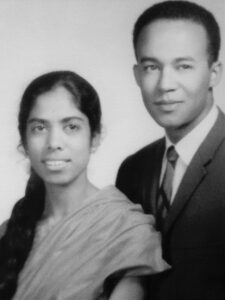 Berkeley was a hotbed of activism in the 1960s. Donald Harris arrived there from Jamaica in 1961, remember, as a graduate student in economics. Shyamala Gopalan had been there since 1958, heading halfway around the world at age 19 to study nutrition and endocrinology. The two met in 1962 at a meeting of the Afro-American Association, he spoke that evening; they talked; more meetings, more talk. They married the next year; two bright, intelligent people caught up the electricity of change – at Berkeley, across the United States, in their home countries. Jamaica became an independent nation; Indira Gandhi became India’s first female Prime Minister; Lyndon Johnson’s civil rights agenda took hold. Shyamala earned her PhD in 1964; Donald earned his in 1966. They had babies together, two daughters, Kamala in 1964, Maya in 1967. They moved around as their careers began to bloom; university teaching appointments, research. In 1972, they parted ways. Shyamala’s reputation in cancer research is legendary; it led to advancements in the knowledge of hormones pertaining to breast cancer; she served on the President’s Special Commission on Breast Cancer. Donald’s reputation is equally solid; Professor of Economics at Stanford from 1972-1998, now Professor Emeritus there. Throughout his career he has worked on economic analysis and policy regarding the economy of Jamaica and served as economic advisor to successive Prime Ministers.
Berkeley was a hotbed of activism in the 1960s. Donald Harris arrived there from Jamaica in 1961, remember, as a graduate student in economics. Shyamala Gopalan had been there since 1958, heading halfway around the world at age 19 to study nutrition and endocrinology. The two met in 1962 at a meeting of the Afro-American Association, he spoke that evening; they talked; more meetings, more talk. They married the next year; two bright, intelligent people caught up the electricity of change – at Berkeley, across the United States, in their home countries. Jamaica became an independent nation; Indira Gandhi became India’s first female Prime Minister; Lyndon Johnson’s civil rights agenda took hold. Shyamala earned her PhD in 1964; Donald earned his in 1966. They had babies together, two daughters, Kamala in 1964, Maya in 1967. They moved around as their careers began to bloom; university teaching appointments, research. In 1972, they parted ways. Shyamala’s reputation in cancer research is legendary; it led to advancements in the knowledge of hormones pertaining to breast cancer; she served on the President’s Special Commission on Breast Cancer. Donald’s reputation is equally solid; Professor of Economics at Stanford from 1972-1998, now Professor Emeritus there. Throughout his career he has worked on economic analysis and policy regarding the economy of Jamaica and served as economic advisor to successive Prime Ministers.
Going Wide
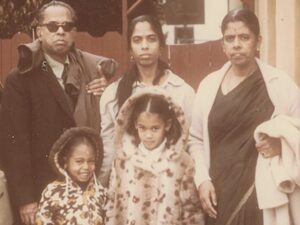 So what did that mean for Kamala? It means she was born to parents from vastly different backgrounds; college students who left their home countries and worked hard to earn advanced degrees and move forward into productive lives. It means that in 1969 California, as part of Berkeley’s comprehensive desegregation program, she was bused to kindergarten from her black neighborhood to a more prosperous white one. It means that when she visited grandparents, she got to travel to Jamaica, and to India. It means she romped and played with cousins whose accents were
So what did that mean for Kamala? It means she was born to parents from vastly different backgrounds; college students who left their home countries and worked hard to earn advanced degrees and move forward into productive lives. It means that in 1969 California, as part of Berkeley’s comprehensive desegregation program, she was bused to kindergarten from her black neighborhood to a more prosperous white one. It means that when she visited grandparents, she got to travel to Jamaica, and to India. It means she romped and played with cousins whose accents were 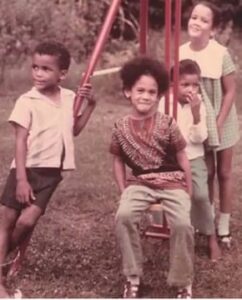 different from hers, and each other’s. It means she became the child of divorced parents; she and her sister moved to Quebec with their mother. She attended a French-speaking primary school; she graduated high school in Montreal in 1981; then on to Howard University in Washington, DC. While at Howard, she interned as a mailroom clerk for California senator Alan Cranston, chaired the economics society, led the debate team, and joined Alpha Kappa Alpha sorority, graduating in 1986 with a degree in political science and economics. Law school next at the University of California, Hastings College of the Law, where she was president of its chapter of the Black Law Students Association. Law degree 1989; California Bar 1990. That’s 26 years of Going Wide, I’d say.
different from hers, and each other’s. It means she became the child of divorced parents; she and her sister moved to Quebec with their mother. She attended a French-speaking primary school; she graduated high school in Montreal in 1981; then on to Howard University in Washington, DC. While at Howard, she interned as a mailroom clerk for California senator Alan Cranston, chaired the economics society, led the debate team, and joined Alpha Kappa Alpha sorority, graduating in 1986 with a degree in political science and economics. Law school next at the University of California, Hastings College of the Law, where she was president of its chapter of the Black Law Students Association. Law degree 1989; California Bar 1990. That’s 26 years of Going Wide, I’d say.
The Next 30 Years
Beginning in 1990, Kamala did “lawyer work,” Deputy District Attorney in Alameda County, California; Assistant District Attorney in San Francisco; she prosecuted homicide, burglary, robbery, and sexual assault cases; she ran the Family & Childrens Services Division representing child abuse and neglect cases. Then in 2003, she ran for her first elected position, and won; here’s the list from there:
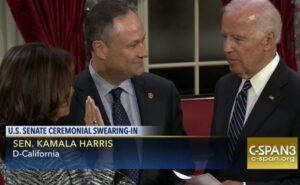 2003 San Francisco District Attorney
2003 San Francisco District Attorney- 2007 San Francisco District Attorney
- 2010 California Attorney General
- 2014 California Attorney General
- 2016 US Senator, California (note: sworn in by Vice President Joe Biden in 2017)
- 2020 US Vice President
Personally, she lost her mother; Shyamala died in 2009; Kamala and sister Maya journeyed to India to scatter their mother’s ashes in the Indian Ocean. In 2014, she got married, gaining 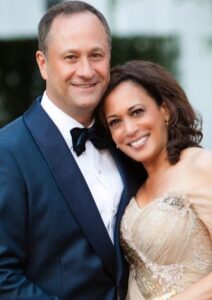 not only a husband, but two step children. Douglas Craig Emhoff was born to Jewish parents in Brooklyn October 13, 1964; the family moved to California when he was 17. He has a law background too; as the new Second Gentleman he gave up his law practice but will be joining the faculty at Georgetown University Law Center. The kids from
not only a husband, but two step children. Douglas Craig Emhoff was born to Jewish parents in Brooklyn October 13, 1964; the family moved to California when he was 17. He has a law background too; as the new Second Gentleman he gave up his law practice but will be joining the faculty at Georgetown University Law Center. The kids from 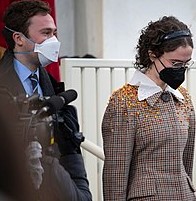 his earlier marriage – Cole and Ella (named after John Coltrane and Ella Fitzgerald) – are 26 and 21 now, did you notice them on the platform at the Inauguration? They call Kamala “Momala,” a new term for our dictionaries, as is “Second Gentleman.” Her family has continued to grow; sister Maya (also a lawyer) has a daughter Meena (also a lawyer); Meena has two daughters, Amara and Lela, the cuties you may have noticed in the Inaugural Parade wearing those faux fur leopard coats which were inspired by similar coats worn by Kamala and Maya when they visited their grandparents in India as children.
his earlier marriage – Cole and Ella (named after John Coltrane and Ella Fitzgerald) – are 26 and 21 now, did you notice them on the platform at the Inauguration? They call Kamala “Momala,” a new term for our dictionaries, as is “Second Gentleman.” Her family has continued to grow; sister Maya (also a lawyer) has a daughter Meena (also a lawyer); Meena has two daughters, Amara and Lela, the cuties you may have noticed in the Inaugural Parade wearing those faux fur leopard coats which were inspired by similar coats worn by Kamala and Maya when they visited their grandparents in India as children.
Kamala’s inauguration as the United State’s first female, inter-racial, multi-cultural vice-president was celebrated not only in the United States, where a dazzling fireworks display capped off the evening, family members and followers celebrated the event in Jamaica and in India too. It went wide! Note the poster display congratulating Kamala with flags from each of the three countries.
What brought Kamala to this place in history? I dug up a few things her parents said to her over the years.
Father Donald Jasper Harris:  My message….was that the sky is the limit on what one can achieve with effort and determination and that, in this process, it is important not to lose sight of those who get left behind by social neglect or abuse and lack of access to resources or ‘privilege’; also not to get ‘swell-headed’ ….and that it is important to ‘give back’ with service to some greater cause than oneself.
My message….was that the sky is the limit on what one can achieve with effort and determination and that, in this process, it is important not to lose sight of those who get left behind by social neglect or abuse and lack of access to resources or ‘privilege’; also not to get ‘swell-headed’ ….and that it is important to ‘give back’ with service to some greater cause than oneself.
Mother Shyamala Gopalan Harris: 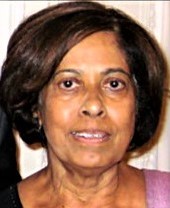 “It’s too hard!” is never an acceptable excuse. Being a good person means standing for something larger than yourself. Success is measured in part by what you help others achieve and accomplish. Most of all, Kamala recalls, her mother instilled in her that she should always “fight systems in a way that causes them to be fairer, and don’t be limited by what has always been.”
“It’s too hard!” is never an acceptable excuse. Being a good person means standing for something larger than yourself. Success is measured in part by what you help others achieve and accomplish. Most of all, Kamala recalls, her mother instilled in her that she should always “fight systems in a way that causes them to be fairer, and don’t be limited by what has always been.”
Don’t be limited by what has always been. “I may be the first to hold this office,” Kamala said on November 7, 2020, commenting on the uniqueness of her election, “but I won’t be the last.”
» posted on Friday, January 22nd, 2021 by Linda Lou Burton
About Joe Biden
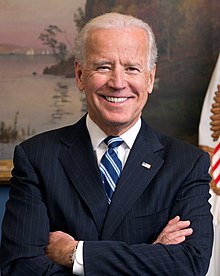 Posted from the capital city of Little Rock, Arkansas by Linda Lou Burton — Joseph Robinette Biden Jr is the 46th president of the United States. Besides what you’ve heard from media blasts, what do you know about the man? Probably what the latest media focus tells you, and which media you choose to listen to. To start with a basic fact, let’s take Joe’s birthdate. It is November 20, 1942, so yes, he’s the oldest elected president ever. Is that a bad thing? Maybe that depends on your age. Do you have respect for your elders? Or do you lean towards the theory that people “lose it” as they age? I was three years old when Joe was born, so in my mind, Joe hasn’t lost it, he “gets it.” He, and I, have
Posted from the capital city of Little Rock, Arkansas by Linda Lou Burton — Joseph Robinette Biden Jr is the 46th president of the United States. Besides what you’ve heard from media blasts, what do you know about the man? Probably what the latest media focus tells you, and which media you choose to listen to. To start with a basic fact, let’s take Joe’s birthdate. It is November 20, 1942, so yes, he’s the oldest elected president ever. Is that a bad thing? Maybe that depends on your age. Do you have respect for your elders? Or do you lean towards the theory that people “lose it” as they age? I was three years old when Joe was born, so in my mind, Joe hasn’t lost it, he “gets it.” He, and I, have  lived through the scares and fears and patriotism of WWII and its aftermath; the conformity of the 50s when folks settled back into traditional roles, though civil rights issues began to grip our thinking. The 60s, 70s, 80s brought us Barbie, Vietnam, Moonwalks; women’s rights, gay rights, Watergate; hippies, me-first, greed, AIDS. We morphed into the 90s learning to depend on the internet, chatting with total strangers once the whine and click of “signing on” connected us to the world beyond. We got mail! We eased into a new century despite doomsday forecasts of our worldly systems shutting down. We got hooked on technology and upping our range; our phones became cameras; Bluetooth, Facebook, YouTube became our crutch; Twitter and Going Viral became the norm.
lived through the scares and fears and patriotism of WWII and its aftermath; the conformity of the 50s when folks settled back into traditional roles, though civil rights issues began to grip our thinking. The 60s, 70s, 80s brought us Barbie, Vietnam, Moonwalks; women’s rights, gay rights, Watergate; hippies, me-first, greed, AIDS. We morphed into the 90s learning to depend on the internet, chatting with total strangers once the whine and click of “signing on” connected us to the world beyond. We got mail! We eased into a new century despite doomsday forecasts of our worldly systems shutting down. We got hooked on technology and upping our range; our phones became cameras; Bluetooth, Facebook, YouTube became our crutch; Twitter and Going Viral became the norm.
Then came 2020, “the worst year ever” is its label now; it slapped us hard. A virus? As the year wore on, our disbelief turned into shrieks of blame; or avoidance of the issue. We quarantined at home, or we did not. We masked our faces, or we did not. We were angry, disillusioned, unemployed, sad. We canceled plans, and dreams. Buried feelings festered as we sat at home, losing sight of what had been our normal life. Small irritations grew large. We missed the human touch. When you can’t be in the world yourself, you reach for promises, hoping somebody knows what to do.
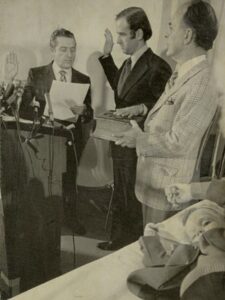 That is the world as Joe Biden steps into the role of leadership in 2021. What a plate of hoo-ha we’ve handed him to deal with! Can we trust him to do it? Joe is not perfect. But he has lived through vastly changing times, as humans have behaved badly, and then regretted it; as thinking has changed with lessons learned. Joe has done some really good things in his lifetime; and apologized for a lot of things he regrets. Joe has experienced great loss; he was sworn into his first role as a Senator in 1973 in the hospital, just after his wife and infant daughter died in a tragic accident that injured his young sons. He has been a single parent, but moved on into a second marriage with Jill Jacobs, now in its 44th year. He has fathered four children – Beau,
That is the world as Joe Biden steps into the role of leadership in 2021. What a plate of hoo-ha we’ve handed him to deal with! Can we trust him to do it? Joe is not perfect. But he has lived through vastly changing times, as humans have behaved badly, and then regretted it; as thinking has changed with lessons learned. Joe has done some really good things in his lifetime; and apologized for a lot of things he regrets. Joe has experienced great loss; he was sworn into his first role as a Senator in 1973 in the hospital, just after his wife and infant daughter died in a tragic accident that injured his young sons. He has been a single parent, but moved on into a second marriage with Jill Jacobs, now in its 44th year. He has fathered four children – Beau,  Hunter, Naomi, Ashley – and has seven grandchildren today. He has a sister and two brothers, Valerie, Jim, and Frank. His parents – Joseph Sr and Catherine Eugenia Finnegan Biden – lived long, into their 80s and 90s; they died in 2002 and 2010; his oldest son Beau had too short a life; he died in 2015 at the age of 46. Various members of his family have made him proud, and at times given reason for concern, but he’s always been a family man, and a man of faith. Records show that Joe lived a basically middle-class life; his parents dealt with both good times and hard times. Joe had to overcome a speech impediment; his college years were not extraordinary. But Joe persevered. Joe gets it.
Hunter, Naomi, Ashley – and has seven grandchildren today. He has a sister and two brothers, Valerie, Jim, and Frank. His parents – Joseph Sr and Catherine Eugenia Finnegan Biden – lived long, into their 80s and 90s; they died in 2002 and 2010; his oldest son Beau had too short a life; he died in 2015 at the age of 46. Various members of his family have made him proud, and at times given reason for concern, but he’s always been a family man, and a man of faith. Records show that Joe lived a basically middle-class life; his parents dealt with both good times and hard times. Joe had to overcome a speech impediment; his college years were not extraordinary. But Joe persevered. Joe gets it.
A lot of people like Joe Biden. Let’s look at his electoral record, since 1970, when he was 28 years old, just starting out there in Delaware:
- 1970 County Councilor, 10,573 votes or 55% of total
- 1972 US Senator, 116,006 votes or 50% of total
- 1978 US Senator, 93,930 votes or 58% of total
- 1984 US Senator, 147,831 votes or 60% of total
- 1990 US Senator, 112,918 votes or 63% of total
- 1996 US Senator, 165,465 votes or 60% of total
- 2002 US Senator, 135,235 votes or 58% of total
- 2008 US Senator, 257,484 votes or 53% of total
- 2008 US Vice President, 69,498,516 votes or 53% of total
- 2012 US Vice President, 69,915,795 votes or 51% of total
- 2020 US President, 81,268,757 votes or 51% of total
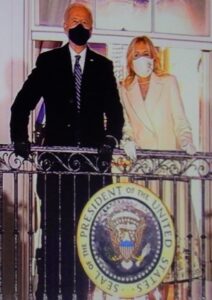 That adds up to 217,722,528 times people “voted for Joe” in the last 50 years. And 81,268,757 people who want Joe to be our President for the next four years. If you are one of them, or if you are not, you need to read what he said in his Inaugural Address on January 20, as he accepted the job we elected him to do; all 2,514 words of it. It’s a declaration of intent, filled with purpose, and closing with a sacred oath. It’s a request to each of us to do our part; a leader is there to lead, to enable us to be the best that we can be. A great America is a cooperative effort. Wear your mask. Get your vaccination. Help your neighbor. Listen before you leap. See the possibilities. https://www.whitehouse.gov/briefing-room/speeches-remarks/2021/01/20/inaugural-address-by-president-joseph-r-biden-jr/
That adds up to 217,722,528 times people “voted for Joe” in the last 50 years. And 81,268,757 people who want Joe to be our President for the next four years. If you are one of them, or if you are not, you need to read what he said in his Inaugural Address on January 20, as he accepted the job we elected him to do; all 2,514 words of it. It’s a declaration of intent, filled with purpose, and closing with a sacred oath. It’s a request to each of us to do our part; a leader is there to lead, to enable us to be the best that we can be. A great America is a cooperative effort. Wear your mask. Get your vaccination. Help your neighbor. Listen before you leap. See the possibilities. https://www.whitehouse.gov/briefing-room/speeches-remarks/2021/01/20/inaugural-address-by-president-joseph-r-biden-jr/
I share with you a few lines of that Inaugural Address that were most meaningful to me.
Recent weeks and months have taught us a painful lesson. There is truth and there are lies. Lies told for power and for profit. And each of us has a duty and responsibility, as citizens, as Americans, and especially as leaders – leaders who have pledged to honor our Constitution and protect our nation — to defend the truth and to defeat the lies.
I understand that many Americans view the future with some fear and trepidation. I understand they worry about their jobs, about taking care of their families, about what comes next. I get it. But the answer is not to turn inward, to retreat into competing factions, distrusting those who don’t look like you do, or worship the way you do, or don’t get their news from the same sources you do.
We must end this uncivil war that pits red against blue, rural versus urban, conservative versus liberal.
We can do this if we open our souls instead of hardening our hearts. If we show a little tolerance and humility. If we’re willing to stand in the other person’s shoes just for a moment. Because here is the thing about life: There is no accounting for what fate will deal you.
There are some days when we need a hand. There are other days when we’re called on to lend one. That is how we must be with one another. And, if we are this way, our country will be stronger, more prosperous, more ready for the future….in the work ahead of us, we will need each other.
My fellow Americans, I close today where I began, with a sacred oath. Before God and all of you I give you my word.
- I will always level with you.
- I will defend the Constitution.
- I will defend our democracy.
- I will defend America.
- I will give my all in your service thinking not of power, but of possibilities.
Tomorrow: About Kamala Harris
» posted on Thursday, January 21st, 2021 by Linda Lou Burton
Inauguration Day 2021
Posted from the capital city of Little Rock, Arkansas by Linda Lou Burton – Yesterday was a great day for unabashed television viewing. I watched our incoming Vice President and her husband arriving on the platform at the Capitol; then our incoming President and his wife taking a seat. Much hype was made of the fact that “Joe Biden is the oldest president ever elected” and “Kamala Harris is the first woman, the first black, and the first Asian elected to such a high-ranking federal position.” Since I am both OLD and a WOMAN, the whole thing tickled me pink. I watched the oaths of office, solemnly taken, Vice President Harris first, as custom dictates. I watched the supporting spouses, right there, a new First Lady and our first  ever Second Gentleman. Masked faces, except when speaking, and in between, a conscientious fellow with a pack of Sani-wipes, making the podium safe for the next person. Famous people showed up to sing for us; Lady Gaga in gigantic glamorous red sang the National Anthem, Jennifer Lopez sang a medley of patriotic songs with the Pledge of Allegiance done in Spanish, and Garth Brooks took his hat off for Amazing Grace. Plus, and it’s a big plus, a new star lit up the sky! Her name is Amanda Gorman, and her reading of her poem, The Hill We Climb, has everybody talking.
ever Second Gentleman. Masked faces, except when speaking, and in between, a conscientious fellow with a pack of Sani-wipes, making the podium safe for the next person. Famous people showed up to sing for us; Lady Gaga in gigantic glamorous red sang the National Anthem, Jennifer Lopez sang a medley of patriotic songs with the Pledge of Allegiance done in Spanish, and Garth Brooks took his hat off for Amazing Grace. Plus, and it’s a big plus, a new star lit up the sky! Her name is Amanda Gorman, and her reading of her poem, The Hill We Climb, has everybody talking.
Following are some of my favorite moments from the televised events of the day. My “screen swipes” I believe they are called.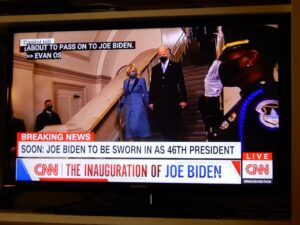
Incoming Vice President Kamala D Harris takes the oath of office.
Incoming President Joseph R Biden Jr takes the oath of office.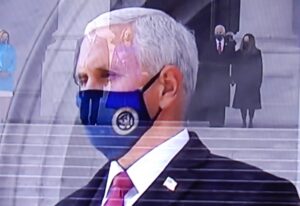
Outgoing Vice President Mike Pence departs the Capitol.
President Biden and Vice President Harris at the Tomb of the Unknown Soldier. Former Presidents Bill Clinton, George Bush, Barack Obama and their wives observe.
Secret Service agents escort #46 on the way to the White House. The Presidential limousine has doors five inches thick; manhole covers are welded shut before such processions take place.
Awaiting the Presidential limousine, view from the White House porch.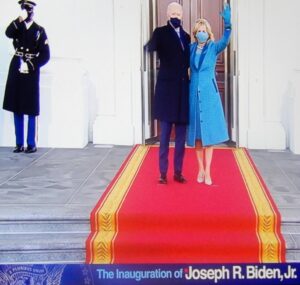
President Joe Biden and First Lady Jill Biden wave from the White House.
The evening ends.
Tomorrow: About Joe Biden
» posted on Wednesday, January 20th, 2021 by Linda Lou Burton
The President Takes Office
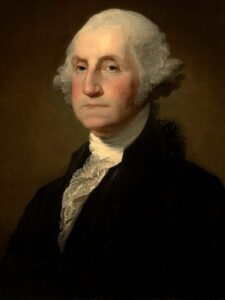 Posted from the capital city of Little Rock, Arkansas by Linda Lou Burton – Every four years, that’s the limit, and it’s been that way since George Washington’s day. It’s right there in the Constitution, Article. II, Section. 1. The executive Power shall be vested in a President of the United States of America. He shall hold his Office during the Term of four Years, and, together with the Vice President, chosen for the same Term, be elected, as follows:
Posted from the capital city of Little Rock, Arkansas by Linda Lou Burton – Every four years, that’s the limit, and it’s been that way since George Washington’s day. It’s right there in the Constitution, Article. II, Section. 1. The executive Power shall be vested in a President of the United States of America. He shall hold his Office during the Term of four Years, and, together with the Vice President, chosen for the same Term, be elected, as follows:
Each State shall appoint, in such Manner as the Legislature thereof may direct, a Number of Electors, equal to the whole Number of Senators and Representatives to which the State may be entitled in the Congress: but no Senator or Representative, or Person holding an Office of Trust or Profit under the United States, shall be appointed an Elector. The Congress may determine the Time of chusing the Electors, and the Day on which they shall give their Votes; which Day shall be the same throughout the United States.
No Person except a natural born Citizen, or a Citizen of the United States, at the time of the Adoption of this Constitution, shall be eligible to the Office of President; neither shall any Person be eligible to that Office who shall not have attained to the Age of thirty five Years, and been fourteen Years a Resident within the United States. Before he enter on the Execution of his Office, he shall take the following Oath or Affirmation:—”I do solemnly swear (or affirm) that I will faithfully execute the Office of President of the United States, and will to the best of my Ability, preserve, protect and defend the Constitution of the United States.” https://www.archives.gov/founding-docs/constitution-transcript
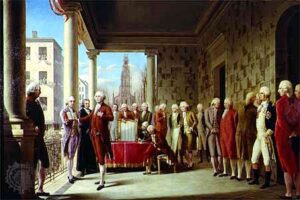 March 4, 1789 was set as the date “for commencing proceedings” of the new government; unfortunately bad weather delayed George Washington’s first inauguration until April 30. After that inaugurations took place on March 4 until the 20th Constitutional Amendment, ratified in 1933, moved Inauguration Day to January 20. Why so long between the November election of a new president and vice-president until they actually assume their duties?
March 4, 1789 was set as the date “for commencing proceedings” of the new government; unfortunately bad weather delayed George Washington’s first inauguration until April 30. After that inaugurations took place on March 4 until the 20th Constitutional Amendment, ratified in 1933, moved Inauguration Day to January 20. Why so long between the November election of a new president and vice-president until they actually assume their duties?
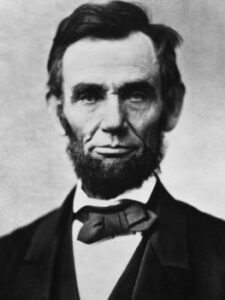 Because back then things simply took longer to get organized – counting votes, assembling a new cabinet, and traveling to the capital. That in-between period, referred to as the lame-duck time of a presidency, has caused problems for our country, especially in times of crisis. After the 1860 election seven states left the Union; outgoing President Buchanan took no action; incoming President Lincoln had no power to act. After the election of 1932, when the country was in the throes of the Great Depression and shanty-towns dotted the landscape, outgoing President Hoover and incoming
Because back then things simply took longer to get organized – counting votes, assembling a new cabinet, and traveling to the capital. That in-between period, referred to as the lame-duck time of a presidency, has caused problems for our country, especially in times of crisis. After the 1860 election seven states left the Union; outgoing President Buchanan took no action; incoming President Lincoln had no power to act. After the election of 1932, when the country was in the throes of the Great Depression and shanty-towns dotted the landscape, outgoing President Hoover and incoming 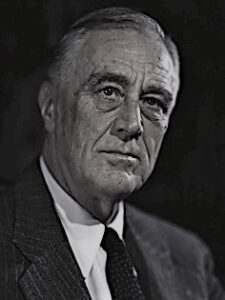 President Roosevelt met to discuss policy, but did not agree on a move forward; no action taken. And even with the switch to a shorter lame-duck period, the election of 2020 occurred during a worldwide pandemic. As our country floundered, plagued by a rapidly rising death count, a desperately sinking economy, and unparalleled business and school shutdowns, outgoing President Trump took no action; incoming President Biden had no power to act.
President Roosevelt met to discuss policy, but did not agree on a move forward; no action taken. And even with the switch to a shorter lame-duck period, the election of 2020 occurred during a worldwide pandemic. As our country floundered, plagued by a rapidly rising death count, a desperately sinking economy, and unparalleled business and school shutdowns, outgoing President Trump took no action; incoming President Biden had no power to act.
Until today. Inauguration 2021 may go down in history as one of the most unusual ever – masked faces and sparse crowds because of our deadly health crisis and the new norm: social distancing. Intense crowd control due to violent political activists who stormed the capitol January 6 with the alleged purpose of overturning the Congressional certification of votes.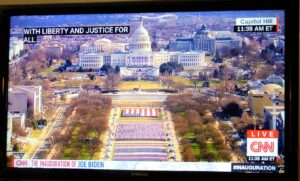
The tried and true were there – members the of Biden and Harris families, members of Congress, former presidents – Bill Clinton with Hillary, George Bush with Laura, Barack Obama with Michelle. Outgoing Vice President Pence was there, but our outgoing president chose not to attend. How many times has that happened? Not many; here’s the list:
- John Adams did not attend the 1801 inauguration of Thomas Jefferson.
- John Quincy Adams did not attend the 1829 inauguration of Andrew Jackson.
- Martin Van Buren did not attend the 1841 inauguration of William Henry Harrison.
- Andrew Johnson did not attend the 1869 inauguration of Ulysses S Grant.
- Donald Trump did not attend the 2021 inauguration of Joseph R Biden Jr.
But guess what. Though the crowd had to be limited, over 40 million people were able to participate in the inauguration of Joseph R Biden Jr as President and Kamala D Harris as Vice-President, thanks to extensive media coverage.
And I was one of them.
Tomorrow: Inauguration Details
» posted on Tuesday, January 19th, 2021 by Linda Lou Burton
A House Full
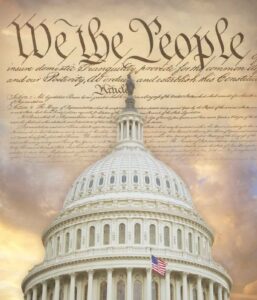 Posted from the capital city of Little Rock, Arkansas by Linda Lou Burton – Yesterday I talked about the US Census. Now you can see why the count of PEOPLE is so important in our united STATES! Each state gets two senators, but the Constitution provided for a House of Representatives based on population. Let’s go back to that original document, where Section 1 states: All legislative Powers herein granted shall be vested in a Congress of the United States, which shall consist of a Senate and House of Representatives. Section 2 spells out the directives for the House – two-year term, at least 25 years old, a resident of the US at least seven years, and a resident of the state they represent.
Posted from the capital city of Little Rock, Arkansas by Linda Lou Burton – Yesterday I talked about the US Census. Now you can see why the count of PEOPLE is so important in our united STATES! Each state gets two senators, but the Constitution provided for a House of Representatives based on population. Let’s go back to that original document, where Section 1 states: All legislative Powers herein granted shall be vested in a Congress of the United States, which shall consist of a Senate and House of Representatives. Section 2 spells out the directives for the House – two-year term, at least 25 years old, a resident of the US at least seven years, and a resident of the state they represent.
The Logic
The Constitution intended to have two different groups each with a different method of representation: the Senate, always, to have TWO representatives from each state, no matter the land area of the state, or the number of people who live in that state. Meaning, today, Rhode Island, the smallest US state with 1,545 square miles, and Alaska, the largest state with 665,384 square miles, are entitled to the same number of senators: TWO.
But the House of Representatives, the Constitution writers figured, should be based on the number of people in each state – We The People, remember? So they rigged up a system to count people, and then allot a certain number of representatives based on population.
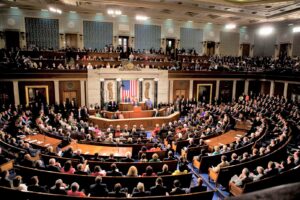 Today, the number of Representatives is fixed at 435 (a House full!), representing – got your calculator handy? – whatever a state’s population may be. Here’s a link to see, and track, who represents you, and how that divvies up state by state, and political party by party; it’s the website maintained by the House of Representatives. https://www.house.gov/
Today, the number of Representatives is fixed at 435 (a House full!), representing – got your calculator handy? – whatever a state’s population may be. Here’s a link to see, and track, who represents you, and how that divvies up state by state, and political party by party; it’s the website maintained by the House of Representatives. https://www.house.gov/
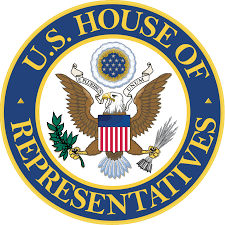 From That House Site: Also referred to as a congressman or congresswoman, each representative is elected to a two-year term serving the people of a specific congressional district. The number of voting representatives in the House is fixed by law at no more than 435, proportionally representing the population of the 50 states. Currently, there are five delegates representing the District of Columbia, the Virgin Islands, Guam, American Samoa, and the Commonwealth of the Northern Mariana Islands. A resident commissioner represents Puerto Rico. Learn more about representatives at The House Explained.
From That House Site: Also referred to as a congressman or congresswoman, each representative is elected to a two-year term serving the people of a specific congressional district. The number of voting representatives in the House is fixed by law at no more than 435, proportionally representing the population of the 50 states. Currently, there are five delegates representing the District of Columbia, the Virgin Islands, Guam, American Samoa, and the Commonwealth of the Northern Mariana Islands. A resident commissioner represents Puerto Rico. Learn more about representatives at The House Explained.
Unlike the Senate, where residents of the District of Columbia and US Territories have no voice, the House provides for delegates who have no vote, but do have floor privileges, can serve on committees, and can introduce legislation.
Can you guess which state has the most delegates in the House? You guessed California, of course, because California has the most people.
In 2021, California has 53 delegates in the House of Representatives. Seven states – Alaska, Delaware, Montana, North Dakota, South Dakota, Vermont, and Wyoming – have 1 delegate each in the House of Representatives because these states have the fewest people. Does this change as population shifts? Yes, it does. “Reapportionment” is the word.
Seeing the People
 Imagine the differences in needs and viewpoint scattered out there in our 50 states! To really get a handle on these variations, read the summaries I wrote during my Journey Across America as I experienced PERSONALLY what makes up our country. What a way to dispel pre-conceived notions and see what is really there. It took me two years and 31,710 miles to get around to all of you. But I can vouch for this: the United States is full of great people.
Imagine the differences in needs and viewpoint scattered out there in our 50 states! To really get a handle on these variations, read the summaries I wrote during my Journey Across America as I experienced PERSONALLY what makes up our country. What a way to dispel pre-conceived notions and see what is really there. It took me two years and 31,710 miles to get around to all of you. But I can vouch for this: the United States is full of great people.
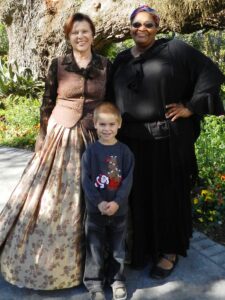 Nice Work If You Can Get It – Texas, Arizona, California, Nevada, Utah https://capitalcitiesusa.org/?p=1686
Nice Work If You Can Get It – Texas, Arizona, California, Nevada, Utah https://capitalcitiesusa.org/?p=1686- Behind Me Now – Idaho, Oregon, Hawaii, Washington, Alaska https://capitalcitiesusa.org/?p=3085
- What a Country! – Montana, North Dakota, South Dakota, Wyoming, Colorado https://capitalcitiesusa.org/?p=4542
- It’s Called Experience – New Mexico, Oklahoma, Arkansas, Mississippi, Louisiana https://capitalcitiesusa.org/?p=6617
- Wherever You Go – Florida, Alabama, Georgia, South Carolina, North Carolina https://capitalcitiesusa.org/?p=7910
 Love What You’ve Got – Virginia, West Virginia, Kentucky, Tennessee, Indiana https://capitalcitiesusa.org/?p=9104
Love What You’ve Got – Virginia, West Virginia, Kentucky, Tennessee, Indiana https://capitalcitiesusa.org/?p=9104- Smack Dab in the Middle – Illinois, Missouri, Kansas, Nebraska, Iowa https://capitalcitiesusa.org/?p=10660
- Swimming Upstream – Minnesota, Wisconsin, Michigan, Ohio, New York https://capitalcitiesusa.org/?p=11983
- Gravel Sucking Trucks – Vermont, Maine, New Hampshire, Massachusetts, Rhode Island https://capitalcitiesusa.org/?p=13460
- Staying Alive and the Final Five – Connecticut, Pennsylvania, New Jersey, Delaware, Maryland https://capitalcitiesusa.org/?p=13763
Our 435 delegates in that crammed-full House have a tremendous task to do, representing not just their state, but working for the good of everybody. And us PEOPLE have a tremendous task too (besides getting along with each other), and that is to thoughtfully elect delegates – to both the Senate, and the House of Representatives, that work together for the highest good of all of us.
We The People is a pretty awesome concept, when you think about it.
‘Nuff said.
Tomorrow: The President Takes Office
» posted on Monday, January 18th, 2021 by Linda Lou Burton
Two by Two – The Senate
Posted from the capital city of Little Rock, Arkansas by Linda Lou Burton – Although the 2020 US Census count has not yet been released, there is a rolling counter on their website that will give you the second-by-second estimate. As I write this post on Monday, January 18, the counter says there are 330,831,523 of us in the United States. By the time you read this post, the number will have changed – there is one birth occurring every 9 seconds, one death every 10 seconds, and one international migrant every 47 seconds, for a net gain of one new person becoming part of the United States of America every 26 seconds. Here’s the counter link, look for yourself: https://www.census.gov/programs-surveys/geography.html
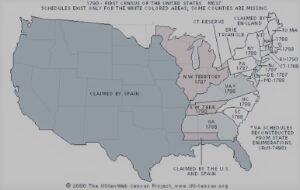 Back in 1790, when our Constitution went into effect, the US had 13 states and a population of 3,929,214. The largest city in the country, New York, had a population of 33,331. Philadelphia, where those 55 guys met to thrash out a Constitution for this baby country, was the second largest, with 28,522 residents. Just think – there were no cell phones, no airplanes, no fast foods, and, in their summer meeting room, no air conditioning. Those fellows could not possibly have foreseen what we are today – almost 4 times as many states, and almost 100 times as many people!
Back in 1790, when our Constitution went into effect, the US had 13 states and a population of 3,929,214. The largest city in the country, New York, had a population of 33,331. Philadelphia, where those 55 guys met to thrash out a Constitution for this baby country, was the second largest, with 28,522 residents. Just think – there were no cell phones, no airplanes, no fast foods, and, in their summer meeting room, no air conditioning. Those fellows could not possibly have foreseen what we are today – almost 4 times as many states, and almost 100 times as many people!
Yet the Constitution they put together still stands, with the additions of The Bill of Rights (rather quickly) and, over the years, 27 Amendments. But interestingly, Article 1, concerning the Congress, still stands as set out in Section 1: All legislative Powers herein granted shall be vested in a Congress of the United States, which shall consist of a Senate and House of Representatives.
The Senate
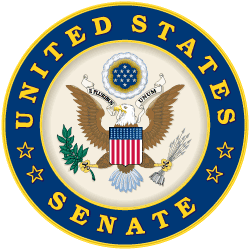 Let’s look at the Senate first. Every state, regardless of area or population, gets two senators, and each senator has one vote. Residents of the District of Columbia, and of the US Territories of American Samoa, Guam, the Northern Mariana Islands, Puerto Rico, and the US Virgin Islands are not represented in the Senate.
Let’s look at the Senate first. Every state, regardless of area or population, gets two senators, and each senator has one vote. Residents of the District of Columbia, and of the US Territories of American Samoa, Guam, the Northern Mariana Islands, Puerto Rico, and the US Virgin Islands are not represented in the Senate.
That totals up to 100 people sitting in for 330+ million of us. These men and women have a tough job, but, unlike the 1700’s, an excellent system of two-way communication. The Senate.gov website, https://www.senate.gov/ not only lists every one of those 100, but allows you to connect with them throughout their term, and to observe the proceedings when they are in session.
So if you want to see for YOURSELF, sans the filters of the media, you can. In addition to LIVE sessions, all sessions are archived. Pick a date, say, January 3, 2021, when 32 newly elected senators were sworn in, and watch the elegant ceremony – two senators at a time, called in alphabetical order and accompanied by the other senator from their state, came to the front for the administration of the oath of office. They carried a Bible or a favorite text in their left hand, raised their right hand, and said “I do” to these words read aloud by the President of the Senate, Vice President Mike Pence:
Do you solemnly swear or affirm that you will support and defend the Constitution of the United States against all enemies, foreign and domestic; that you will bear true faith and allegiance to the same; that you take this obligation freely, without any mental reservation or purpose of evasion; and that you will well and faithfully discharge the duties of the office on which you are about to enter, so help you God?
There was a congratulatory elbow bump afterwards by President Pence, then each new mask-wearing senator stepped to the desk of the Senate secretary and signed the Senate Oath Book.
Something worth watching, two by two. https://www.senate.gov/floor/index.htm
The 117th Senate convened during the final weeks of Donald Trump’s presidency, and will end on January 3, 2023, meeting during the first two years of Joe Biden’s presidency. Beginning January 20, 2021, the new President of the Senate will be Vice President Kamala Harris.
» posted on Sunday, January 17th, 2021 by Linda Lou Burton
Commitment – The Oaths
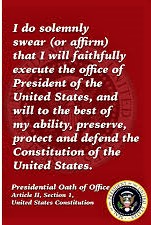 Posted from the capital city of Little Rock, Arkansas by Linda Lou Burton – Before a person elected or appointed to serve in a federal position may officially take office, they are required to take an oath. The oath for the President of the United States was spelled out in Article II, Section 1, Clause 8 of the Constitution that went into effect March 4, 1789:
Posted from the capital city of Little Rock, Arkansas by Linda Lou Burton – Before a person elected or appointed to serve in a federal position may officially take office, they are required to take an oath. The oath for the President of the United States was spelled out in Article II, Section 1, Clause 8 of the Constitution that went into effect March 4, 1789:
“I do solemnly swear (or affirm) that I will faithfully execute the Office of President of the United States, and will to the best of my Ability, preserve, protect and defend the Constitution of the United States.”
The Presidential Oath hasn’t changed since the Constitution; but the Constitution originally specified only that other officials “shall be bound by Oath or Affirmation to support this Constitution.” The First Congress reworked that into a simple fourteen-word oath in 1789 — “I do solemnly swear (or affirm) that I will support the Constitution of the United States.” That remained in effect until the Civil War, when Congress mandated that the oath bar from office anyone who had been disloyal to the Union. Eventually, those elements of the “iron-clad” oath were dropped during revisions in 1868, 1871, and 1884. The oath used today has not changed since 1966 and is prescribed in Title 5, Section 3331 of the United States Code. In contrast to the Presidential Oath, where it’s used only by tradition, the phrase “so help me God” has been part of the official oath of office for non-presidential offices since 1862.
The Vice-President, all members of Congress, and every member of the President’s cabinet must take the following oath before they can assume the duties of their office.
“I do solemnly swear (or affirm) that I will support and defend the Constitution of the United States against all enemies, foreign and domestic; that I will bear true faith and allegiance to the same; that I take this obligation freely, without any mental reservation or purpose of evasion; and that I will well and faithfully discharge the duties of the office on which I am about to enter. So help me God.”
» posted on Saturday, January 16th, 2021 by Linda Lou Burton
Basic – The Constitution
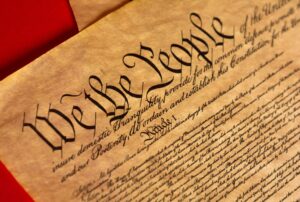 Posted from the capital city of Little Rock, Arkansas by Linda Lou Burton – For $19.95 you can order a facsimile of the Constitution of the United States as it was originally written, way back in 1787. Not kidding – the folks at the National Archives have gone to the trouble of printing all four pages in a 23 x 28 size, on paper that is crinkled and aged in appearance. Go to their store at if you want to see it as it was handwritten, and signed. If you have trouble reading the flourishing script, get yourself a copy of the transcribed version. Or go digital. https://www.archives.gov/founding-docs/constitution-transcript
Posted from the capital city of Little Rock, Arkansas by Linda Lou Burton – For $19.95 you can order a facsimile of the Constitution of the United States as it was originally written, way back in 1787. Not kidding – the folks at the National Archives have gone to the trouble of printing all four pages in a 23 x 28 size, on paper that is crinkled and aged in appearance. Go to their store at if you want to see it as it was handwritten, and signed. If you have trouble reading the flourishing script, get yourself a copy of the transcribed version. Or go digital. https://www.archives.gov/founding-docs/constitution-transcript
The point is – if you live, and work, and play, and sleep, and eat, in the United States, it’s vital that you understand just what that means with regard to your responsibilities, and your privileges. So start by reading the Constitution.
The United States Constitution consists of a Preamble and seven Articles, addressing the idea of a country of united states (there were 13 at the time), and providing directions for how it would work; a “recipe” for a new country. It was created and presented in September 1787 by 55 men representing the states of:
- Connecticut
- Delaware
- Georgia
- Maryland
- Massachusetts
- New Hampshire
- New Jersey
- New York
- North Carolina
- Pennsylvania
- South Carolina
- Virginia
Note: Rhode Island declined to send delegates.
The Preamble
 We the People of the United States, in Order to form a more perfect Union, establish Justice, insure domestic Tranquility, provide for the common defence, promote the general Welfare, and secure the Blessings of Liberty to ourselves and our Posterity, do ordain and establish this Constitution for the United States of America.
We the People of the United States, in Order to form a more perfect Union, establish Justice, insure domestic Tranquility, provide for the common defence, promote the general Welfare, and secure the Blessings of Liberty to ourselves and our Posterity, do ordain and establish this Constitution for the United States of America.
Article I – Legislative
All legislative Powers herein granted shall be vested in a Congress of the United States, which shall consist of a Senate and House of Representatives.
Sections 2-10 describe the scope and limits of these powers, and specify the who, what, and when for election of a person to legislative office.
Article II -Executive
The executive Power shall be vested in a President of the United States of America. He shall hold his Office during the Term of four Years, and, together with the Vice President, chosen for the same Term, be elected, as follows:
Each State shall appoint, in such Manner as the Legislature thereof may direct, a Number of Electors, equal to the whole Number of Senators and Representatives to which the State may be entitled in the Congress: but no Senator or Representative, or Person holding an Office of Trust or Profit under the United States, shall be appointed an Elector.
Sections 2 and 3 outline the duties, responsibilities, and powers of an elected president and Section 4 addresses the removal of an elected president.
Section 4.
The President, Vice President and all civil Officers of the United States, shall be removed from Office on Impeachment for, and Conviction of, Treason, Bribery, or other high Crimes and Misdemeanors.
Article III – Judicial
The judicial Power of the United States, shall be vested in one supreme Court, and in such inferior Courts as the Congress may from time to time ordain and establish. The Judges, both of the supreme and inferior Courts, shall hold their Offices during good Behaviour, and shall, at stated Times, receive for their Services, a Compensation, which shall not be diminished during their Continuance in Office.
Sections 2 and 3 further outline the duties, responsibilities, and powers of the United States judiciary.
Article IV – States and Citizens
Full Faith and Credit shall be given in each State to the public Acts, Records, and judicial Proceedings of every other State. And the Congress may by general Laws prescribe the Manner in which such Acts, Records and Proceedings shall be proved, and the Effect thereof.
Section 2.
The Citizens of each State shall be entitled to all Privileges and Immunities of Citizens in the several States. A Person charged in any State with Treason, Felony, or other Crime, who shall flee from Justice, and be found in another State, shall on Demand of the executive Authority of the State from which he fled, be delivered up, to be removed to the State having Jurisdiction of the Crime.
Sections 3 and 4 outline the admission of new states, and the protections for each state.
Article V – Amendments
Provisions made for amendments to the Constitution as deemed necessary and appropriate.
Article VI – Debts and Oaths
The Senators and Representatives before mentioned, and the Members of the several State Legislatures, and all executive and judicial Officers, both of the United States and of the several States, shall be bound by Oath or Affirmation, to support this Constitution; but no religious Test shall ever be required as a Qualification to any Office or public Trust under the United States.
Article VII – Ratification
The Ratification of the Conventions of nine States, shall be sufficient for the Establishment of this Constitution between the States so ratifying the Same.
What Happened Next
 Only 39 men actually signed the Constitution, which illustrates just how hard a task it was to get agreement on this “never done before” undertaking. It was crafted by men representing very different interests and views, who cared enough to come together and, after three hot summer months of thrashing out ideas, move forward in compromise. The delegates ranged in age from Jonathan Dayton, aged 26, to Benjamin Franklin, aged 81, who was so infirm that he had to be carried to sessions. Five states – Delaware, Pennsylvania, New Jersey, Georgia, and Connecticut – ratified the Constitution quickly; followed by Maryland and South Carolina; the ninth state to ratify was New Hampshire. It was agreed that the Constitution would go into effect March 4, 1789. Virginia, New York, North Carolina, and Rhode Island were the last four states to complete the ratification process, by May of 1790.
Only 39 men actually signed the Constitution, which illustrates just how hard a task it was to get agreement on this “never done before” undertaking. It was crafted by men representing very different interests and views, who cared enough to come together and, after three hot summer months of thrashing out ideas, move forward in compromise. The delegates ranged in age from Jonathan Dayton, aged 26, to Benjamin Franklin, aged 81, who was so infirm that he had to be carried to sessions. Five states – Delaware, Pennsylvania, New Jersey, Georgia, and Connecticut – ratified the Constitution quickly; followed by Maryland and South Carolina; the ninth state to ratify was New Hampshire. It was agreed that the Constitution would go into effect March 4, 1789. Virginia, New York, North Carolina, and Rhode Island were the last four states to complete the ratification process, by May of 1790.
Today the United States Constitution is the oldest written constitution in operation in the world. It consists of 4,543 words. Check out that original, the beginnings of the framework of the United States.
Give it a read. It’s a basic.
A BONUS – The National Archives not only offers you the opportunity to see that document and all those signatures, beginning with George Washington’s, but allows you to add your digital signature! https://www.archives.gov/founding-docs/join-the-signers
Footnote: Jacob Shallus was the “engrosser” who penned the document on four sheets of parchment made from treated animal skin (the conservator at the Archives says it was either calf, goat, or sheep skin). He used a goose quill with ink made of iron filings in oak gall. It started out black, but has aged to a brown color. Jacob, who was 37 at the time, was paid $30 for his work; he was Assistant Clerk to the Pennsylvania Assembly at the time, so likely was chosen for the job due to the Convention’s desire for speedy drafting; he was there and available to do the job. His name appears nowhere on the document.
Upcoming posts: Amendments, Growth, Changes
Tomorrow: The Oaths


